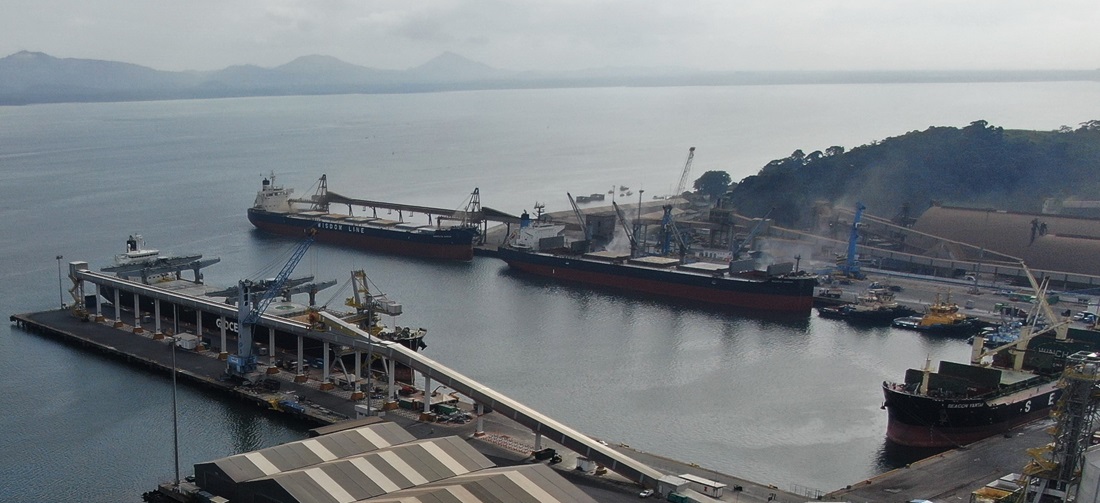
Santa Catarina Governor Seeks Private Funding for Expansion of Babitonga Bay
Jun, 03, 2024 Posted by Gabriel MalheirosWeek 202423
Santa Catarina Governor Jorginho Mello signed a protocol of intentions on Monday (3) to explore alternative financing options for expanding Babitonga Bay, a crucial waterway through which ships access the ports of São Francisco do Sul and Porto Itapoá. This agreement involves both terminals and could pioneer an innovative financing model in Brazil, facilitating the arrival of the new generation of large vessels in the region.
The project is estimated at R$300 million, with the initial proposal aiming for full funding by the private sector. The return on investment is envisaged through reduced taxes on new ships crossing the channel, essentially those joining the current portfolio of the port complex post-access enhancements.
This financing model is innovative in Brazil given that waterway access projects typically fall under federal jurisdiction. In cases where ports are delegated to states, such as São Francisco do Sul, or municipalities, like Itajaí, costs may be shared. Nonetheless, these remain federal infrastructure.
The Port of São Francisco do Sul excels as an export gate to solid bulk cargo, notably soybean shipments. The following chart shows this port’s top export shipments in terms of volume in the first four months of 2024. The data is from DataLiner.
Top Export Cargo | São Francisco do Sul | Jan 2024 – Apr 2024 | WTMT
Source: DataLiner (click here to request a demo)
The agreement signed by the governor outlines the financing model, environmental permits, contracting procedures, project execution, and monitoring. This protocol of intentions marks the initial step toward realizing the project. Following its signing, the matter will be forwarded to the Ministry of Ports and Airports (MPor) and the National Waterborne Transport Agency (Antaq) for validation and further processing. With approvals secured, it is anticipated that the tender for project implementation will be announced later this year.
Beto Martins, Secretary of Ports, Airports, and Railways, emphasized the significance of this endeavor, stating, “It’s a project of paramount importance to ensure the competitiveness of ports amidst the ongoing market modernization. Moreover, this partnership between the state government and the private sector will serve as a blueprint for future large-scale projects.”
The dredging project aims to deepen and widen the external channel leading to the Ports of São Francisco do Sul and Itapoá. This enhancement will increase the depth from the current 14 meters to 16 meters, enabling the navigation of vessels up to 366 meters in length, compared to the current limit of 310 meters.
Cleverton Vieira, President of the Port of São Francisco do Sul, stressed the project’s significance for Santa Catarina, noting its role in preserving the state’s logistical advantage and attracting new businesses. He added, “This initiative will generate revenue, employment, and development for the State, facilitating Porto Itapoá to accommodate the largest containerships traversing the Brazilian coast.”
The project holds a prior environmental license issued by Ibama. Initial steps will involve smoothing the channel curve to enhance navigation safety, followed by widening and realigning the external access channel while deepening it to 16 meters.
Additionally, a portion of the dredged sand will be utilized to reinforce the coastline of Itapoá municipality, which has experienced erosion in recent years. This marks the first instance in Brazil of using sediments from port dredging to expand a beach, underscoring the project’s environmental and infrastructural significance.
Source: NSC Total
Click here to view the original news publication: https://www.nsctotal.com.br/colunistas/dagmara-spautz/como-sc-quer-acelerar-chegada-de-nova-geracao-de-navios-gigantes-aos-portos
-
Ports and Terminals
May, 18, 2021
0
Log-In inaugurates new vehicle terminal in the Port of Vitória
-
Ports and Terminals
Aug, 01, 2020
0
Senate approves provisional measure to alter port legislation
-
Grains
Jun, 15, 2020
0
Buenos Aires stock exchange against grain export Vicentin’s expropriation
-
Ports and Terminals
Mar, 30, 2022
0
Federal Revenue locates 47kg of cocaine in a reefer container in the Port of Santos


